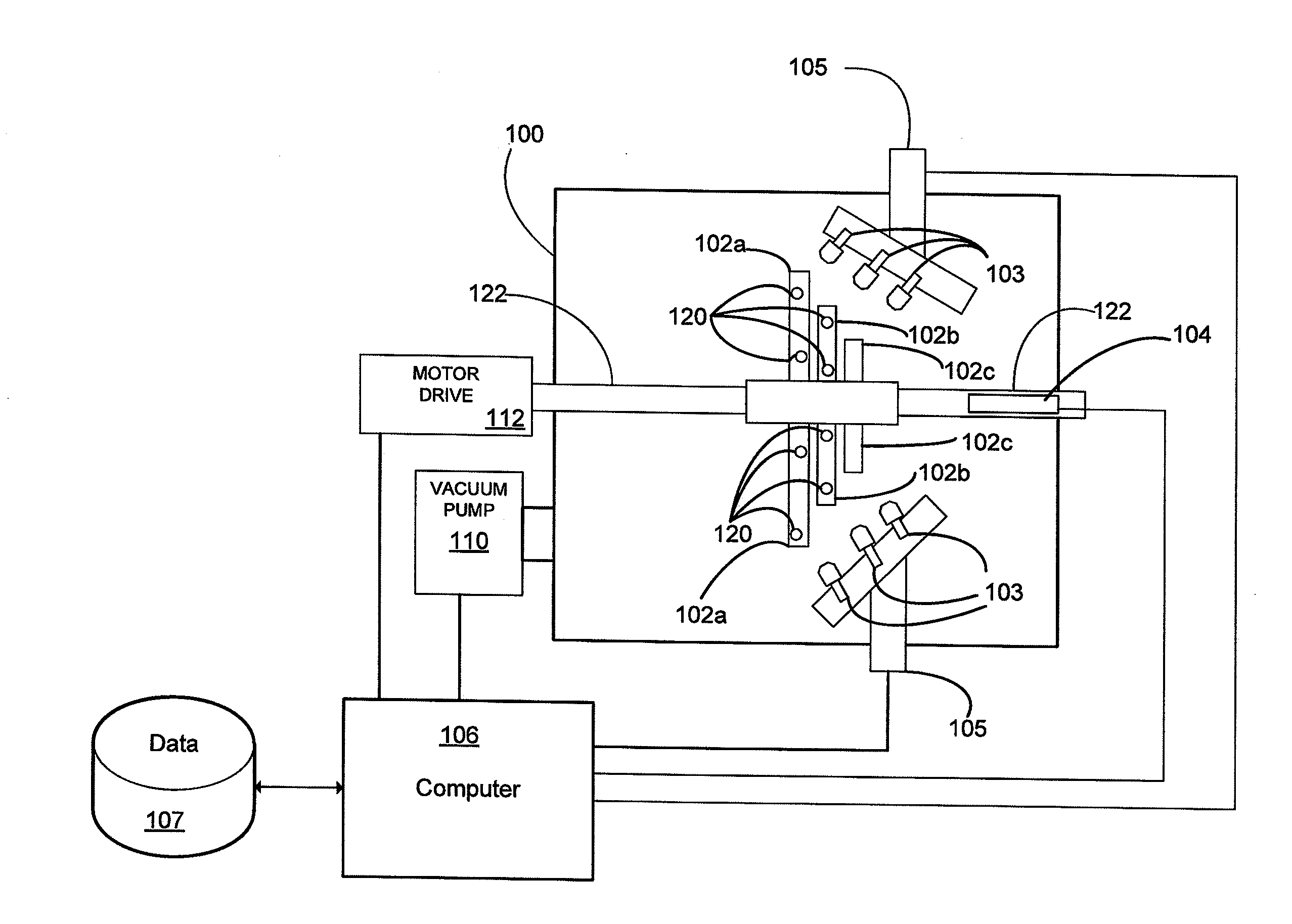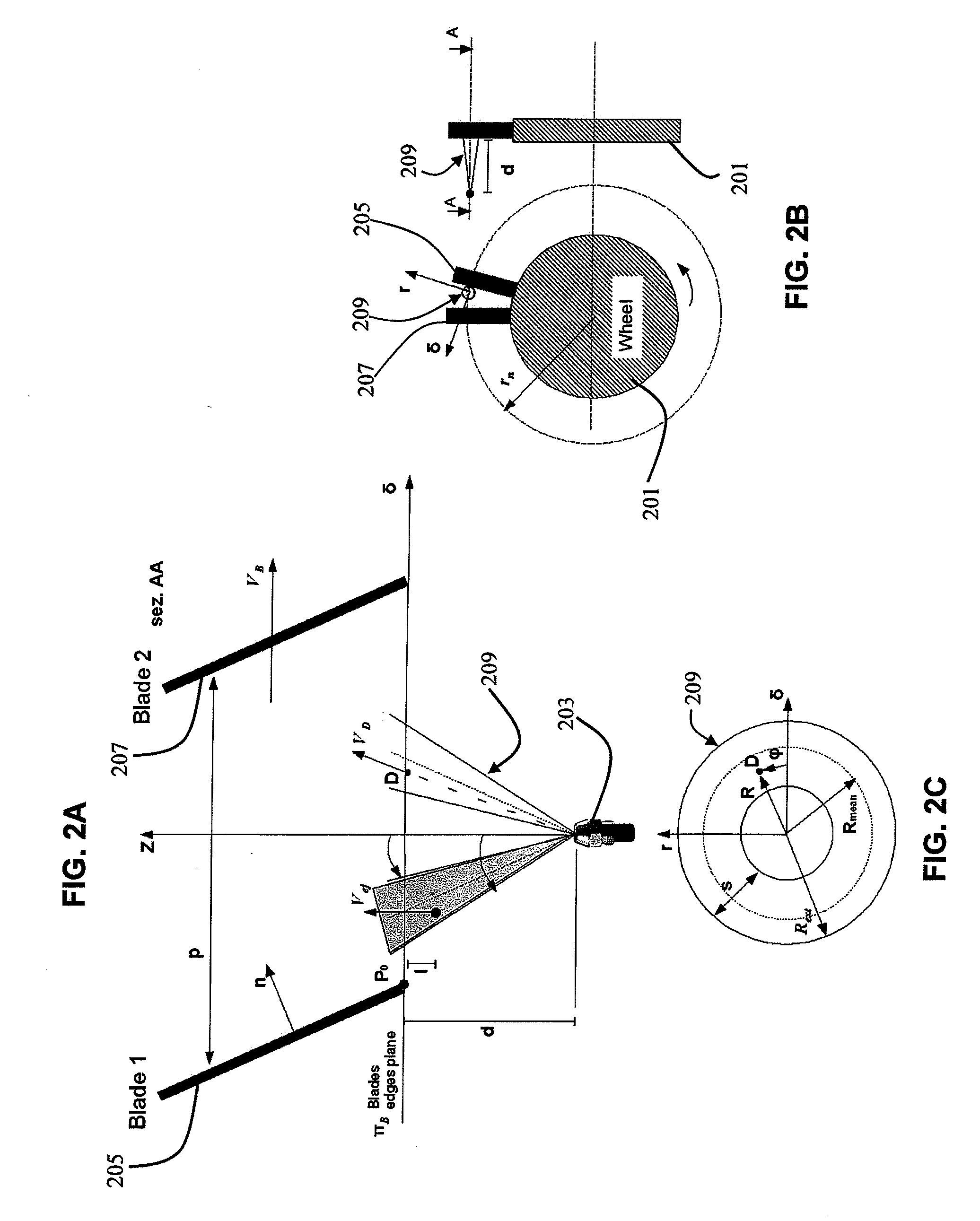Method and system for turbine blade characterization
a turbine blade and characterization technology, applied in the field of turbine blade characterization, can solve the problems of not being able to perform at too low of an absolute pressure, not being able to fully address the desires and needs of turbine blade design, and poor information about the modal form of the wheelblad
- Summary
- Abstract
- Description
- Claims
- Application Information
AI Technical Summary
Benefits of technology
Problems solved by technology
Method used
Image
Examples
Embodiment Construction
[0035]As will be understood in view of the ensuing description, various embodiments of the invention relate to experimental testing, and include aspects and embodiments that may be divided, for convenience, into three primary areas: test set-up; excitation analysis / modeling; and post-processing (e.g., phase\tonal analysis). As will be understood, subject matter embraced by the present invention includes, but is not limited to, embodiments directed to each of these primary areas individually, as well as to embodiments directed to combinations of two or more of these primary areas. More specifically, as will be understood by those skilled in the art, methods and systems according to embodiments of the present invention include integrating embodiments and / or aspects of all three areas in order to define and characterize the mechanical response of the system (e.g., the turbine blades being tested).
[0036]Additionally, as will be understood by those skilled in the art in view of the prese...
PUM
 Login to View More
Login to View More Abstract
Description
Claims
Application Information
 Login to View More
Login to View More - R&D
- Intellectual Property
- Life Sciences
- Materials
- Tech Scout
- Unparalleled Data Quality
- Higher Quality Content
- 60% Fewer Hallucinations
Browse by: Latest US Patents, China's latest patents, Technical Efficacy Thesaurus, Application Domain, Technology Topic, Popular Technical Reports.
© 2025 PatSnap. All rights reserved.Legal|Privacy policy|Modern Slavery Act Transparency Statement|Sitemap|About US| Contact US: help@patsnap.com



